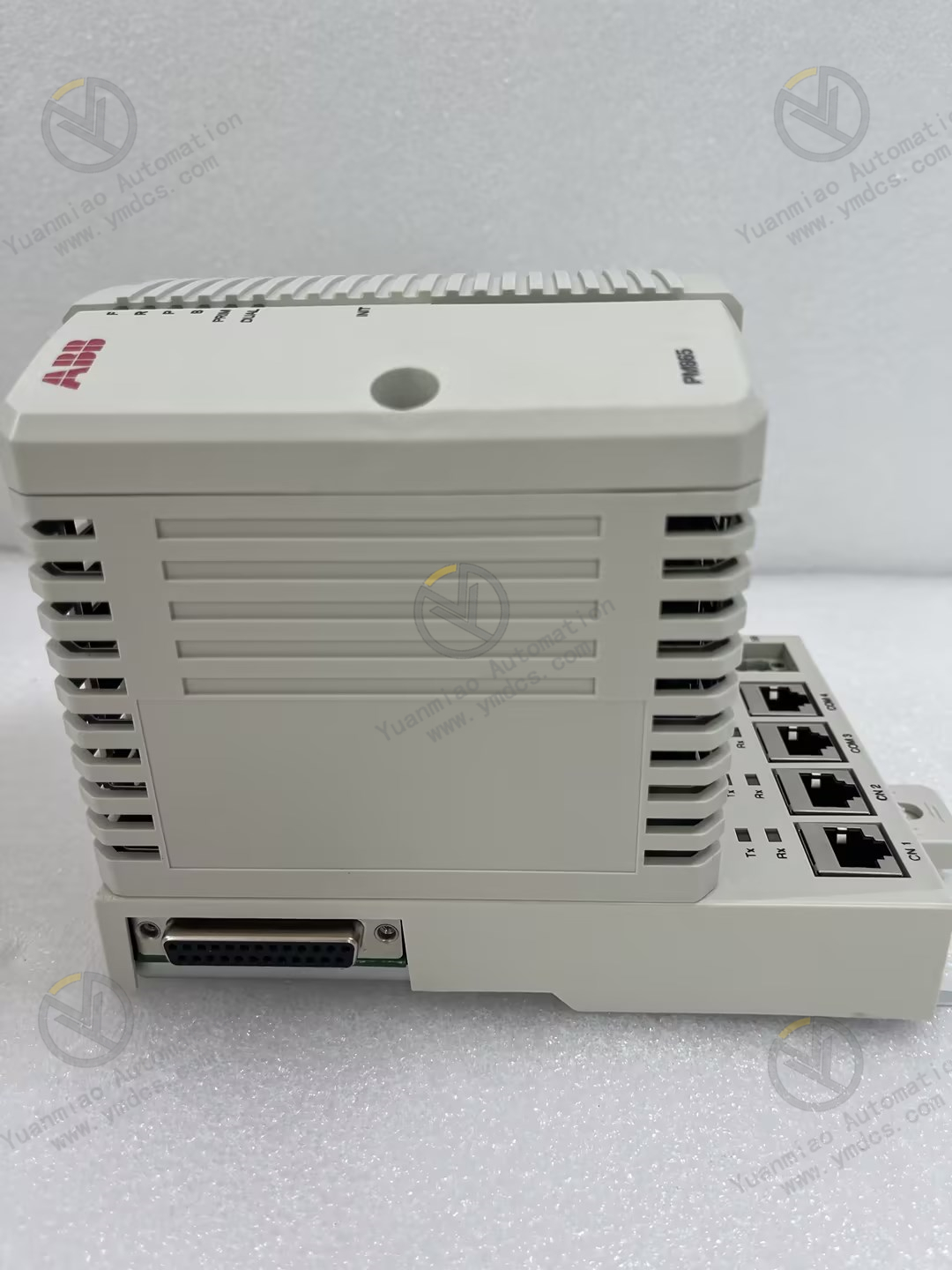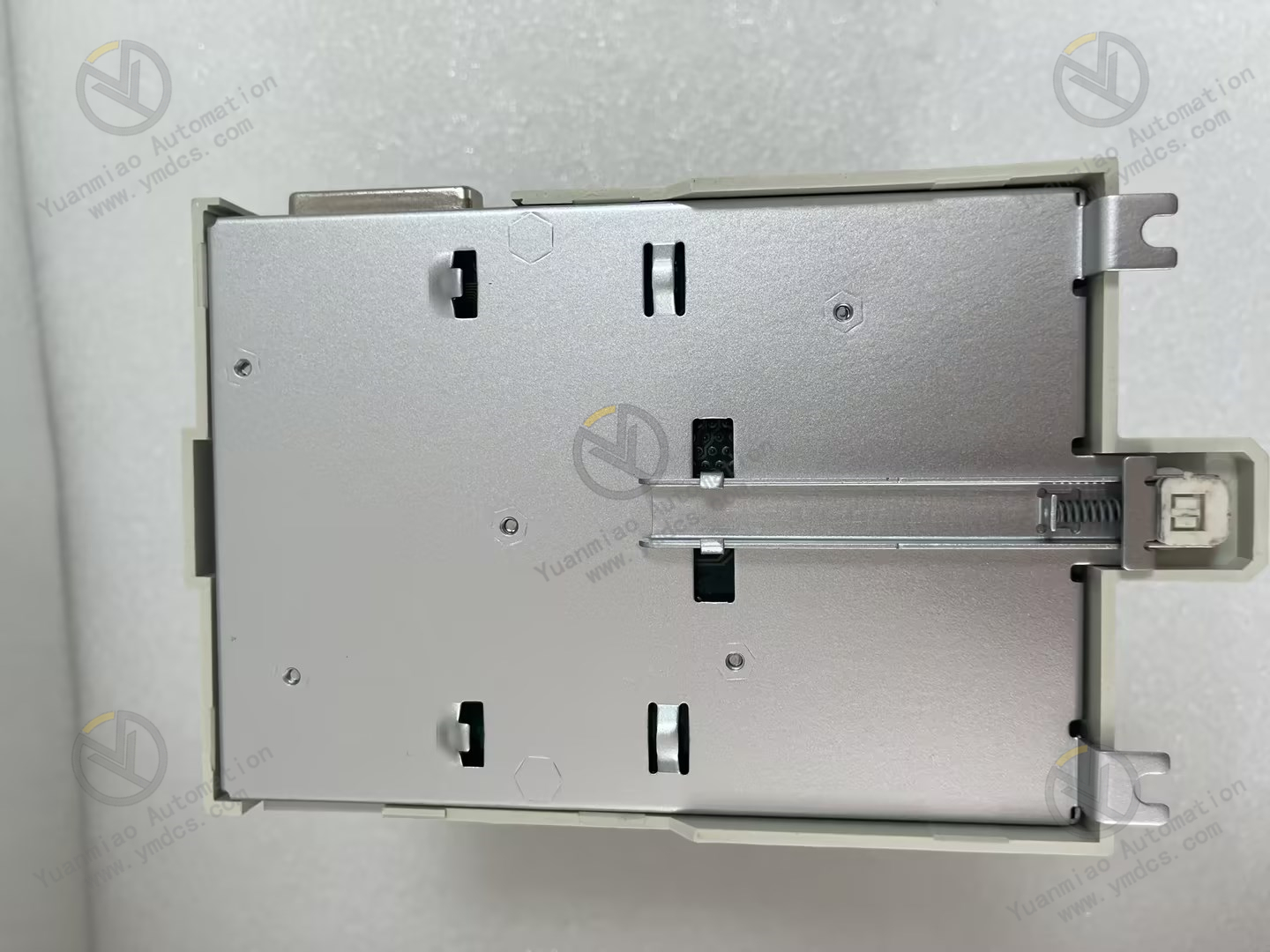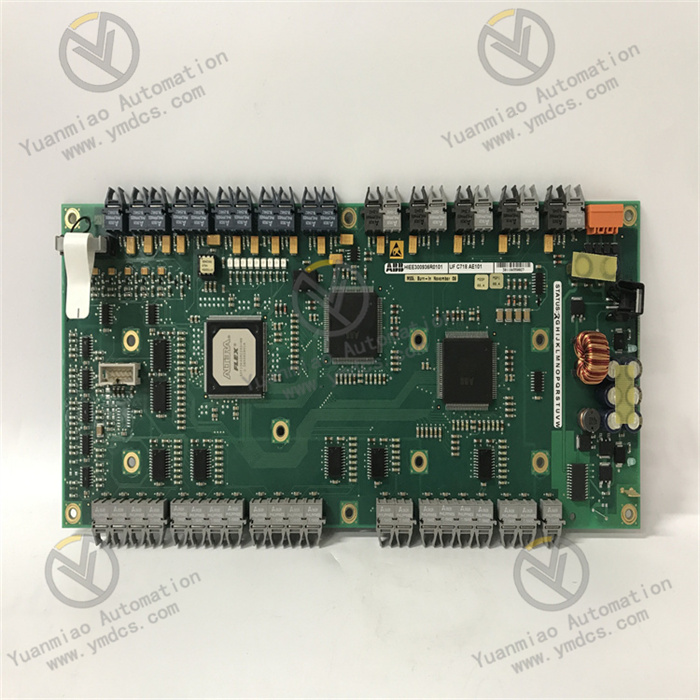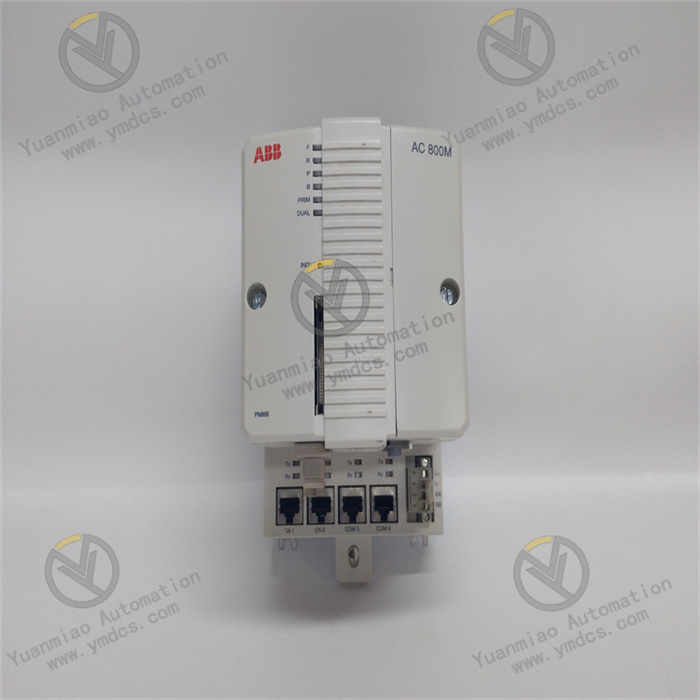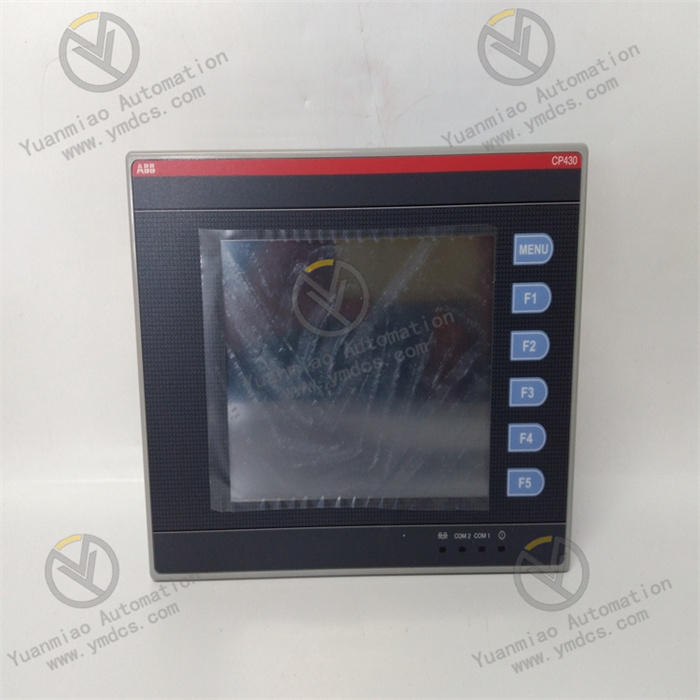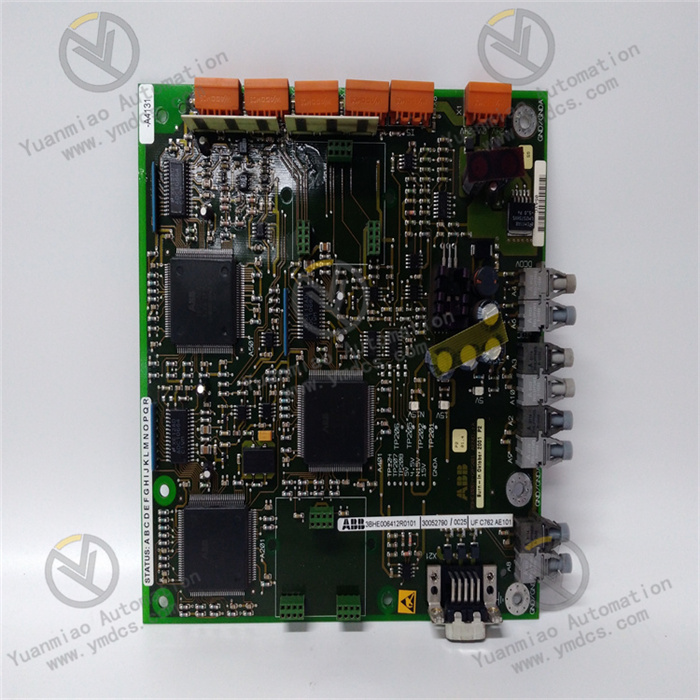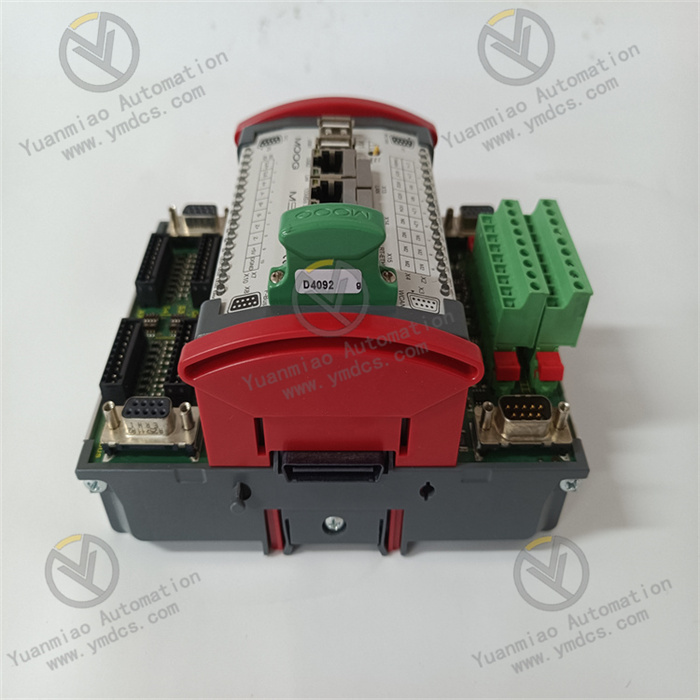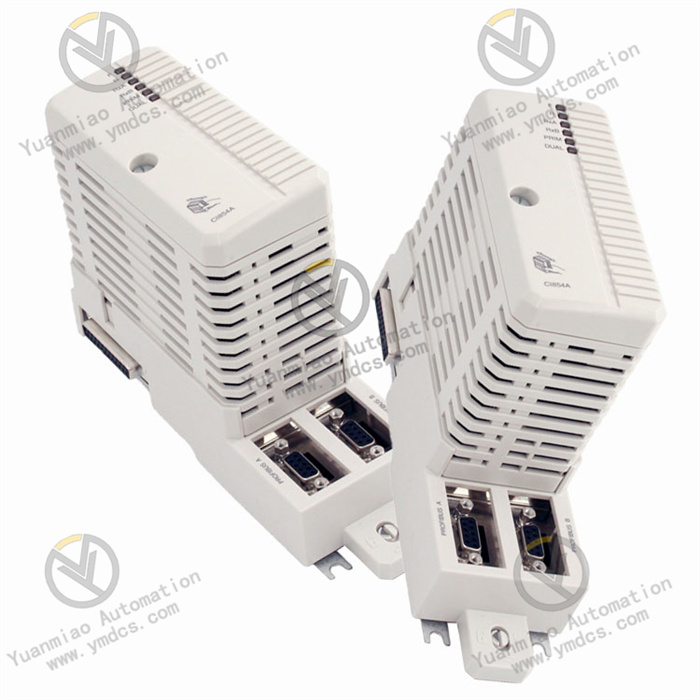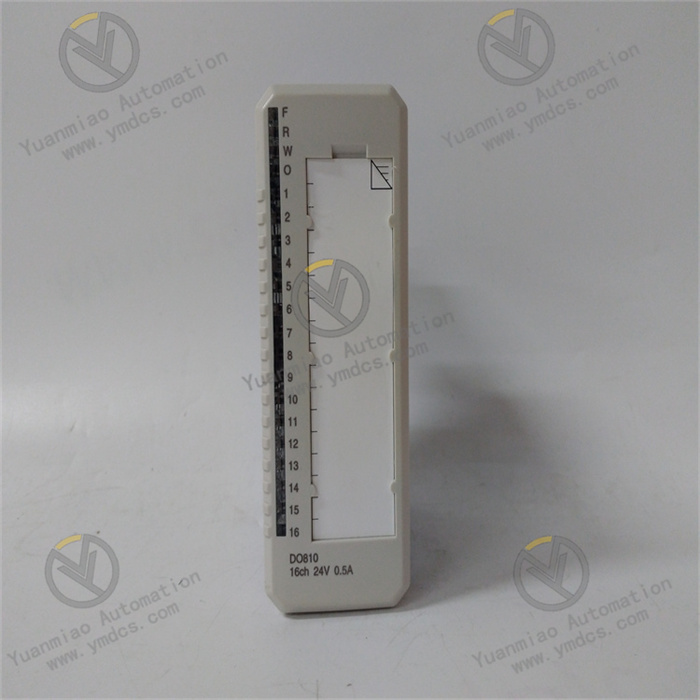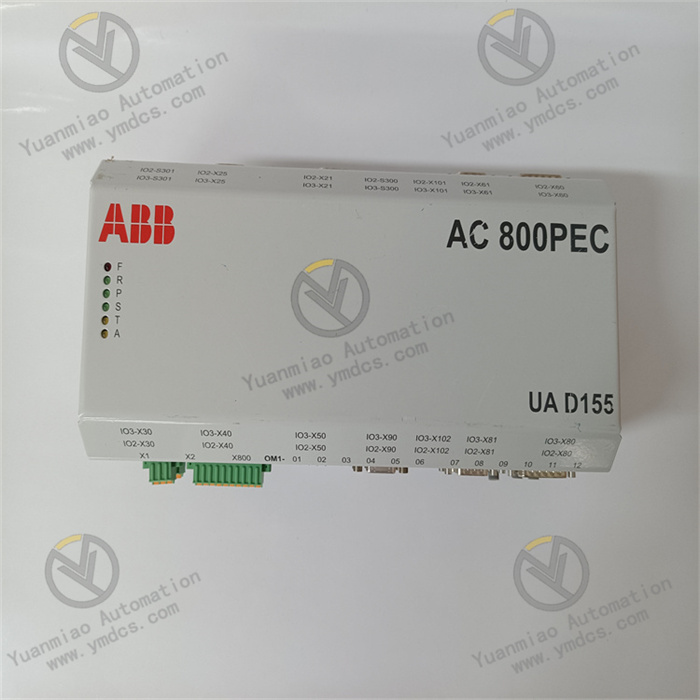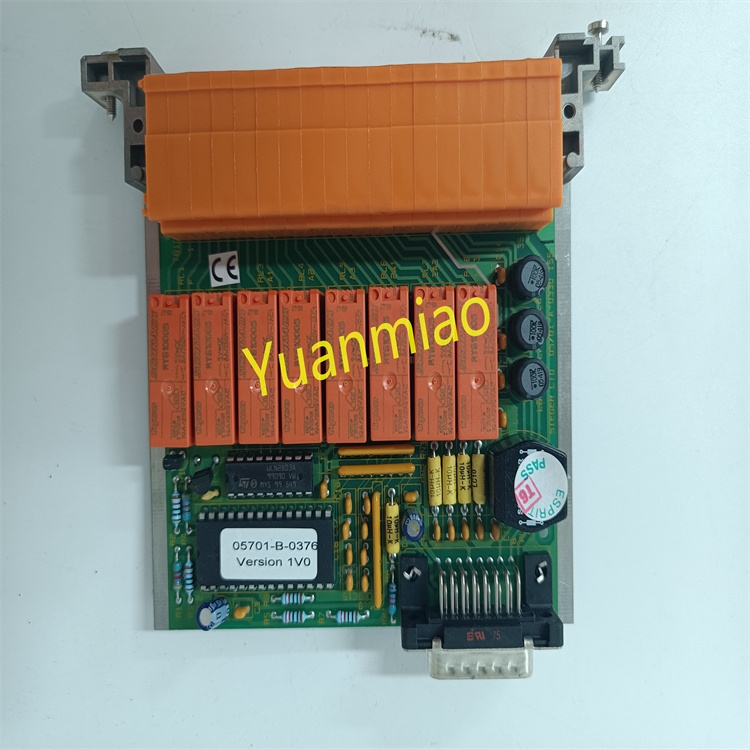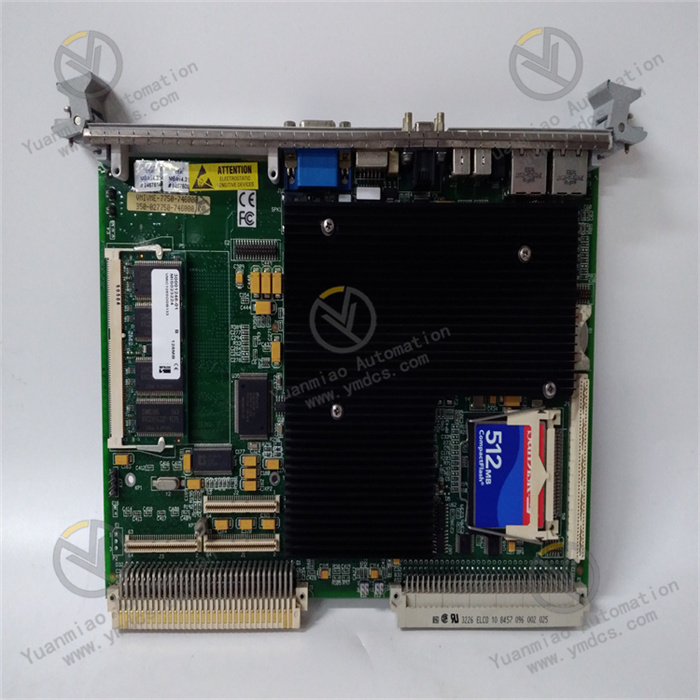Description
ABB PM865K02 3BSE031150R1 Redundant Processor Unit
Technical Parameters
Processor: Equipped with an MPC862P processor running at 96MHz, capable of achieving a performance of 0.17 milliseconds per 1,000 Boolean operations.
Memory: Total memory is 32MB, including 22.184MB of application-accessible RAM and 4MB of Flash PROM for firmware storage.
Communication Interfaces:
Memory: Total memory is 32MB, including 22.184MB of application-accessible RAM and 4MB of Flash PROM for firmware storage.
Communication Interfaces:
- Ethernet: 2 Ethernet channels with IEEE 802.3 compliant interfaces, 10Mbit/s speed, RJ-45 connectors (8-pole with internal threads), supporting MMS (Manufacturing Message Service) and IAC (Inter-Application Communication) protocols.
- Serial Ports:
- RS-232C interface (COM3): 75–19200 baud, RJ-45 (8-pole internal threads), non-optically isolated, fully supporting RTS-CTS.
- RS-232C interface (COM4): 9600 baud, RJ-45 (8-pole internal threads), optically isolated, not supporting RTS-CTS.
Power Supply: Operates at 24V DC (voltage range: 19.2–30V DC), with typical power consumption of 6.9W (max 11.4W). The +24V current is typically 287mA and max 487mA. Features redundant power status input and a built-in 3.6V lithium backup battery.
Dimensions and Weight: 119 mm (width) × 186 mm (height) × 135 mm (depth), weighing 2300 grams.
Operating Environment: - Working temperature: +5°C to +55°C
- Storage temperature: -40°C to +70°C
- Altitude: 2000 meters
- Pollution degree: Level 2
- Relative humidity: 5%–95% (non-condensing)
- Emission and immunity: Compliant with EN 61000-6-4 and EN 61000-6-2 standards.
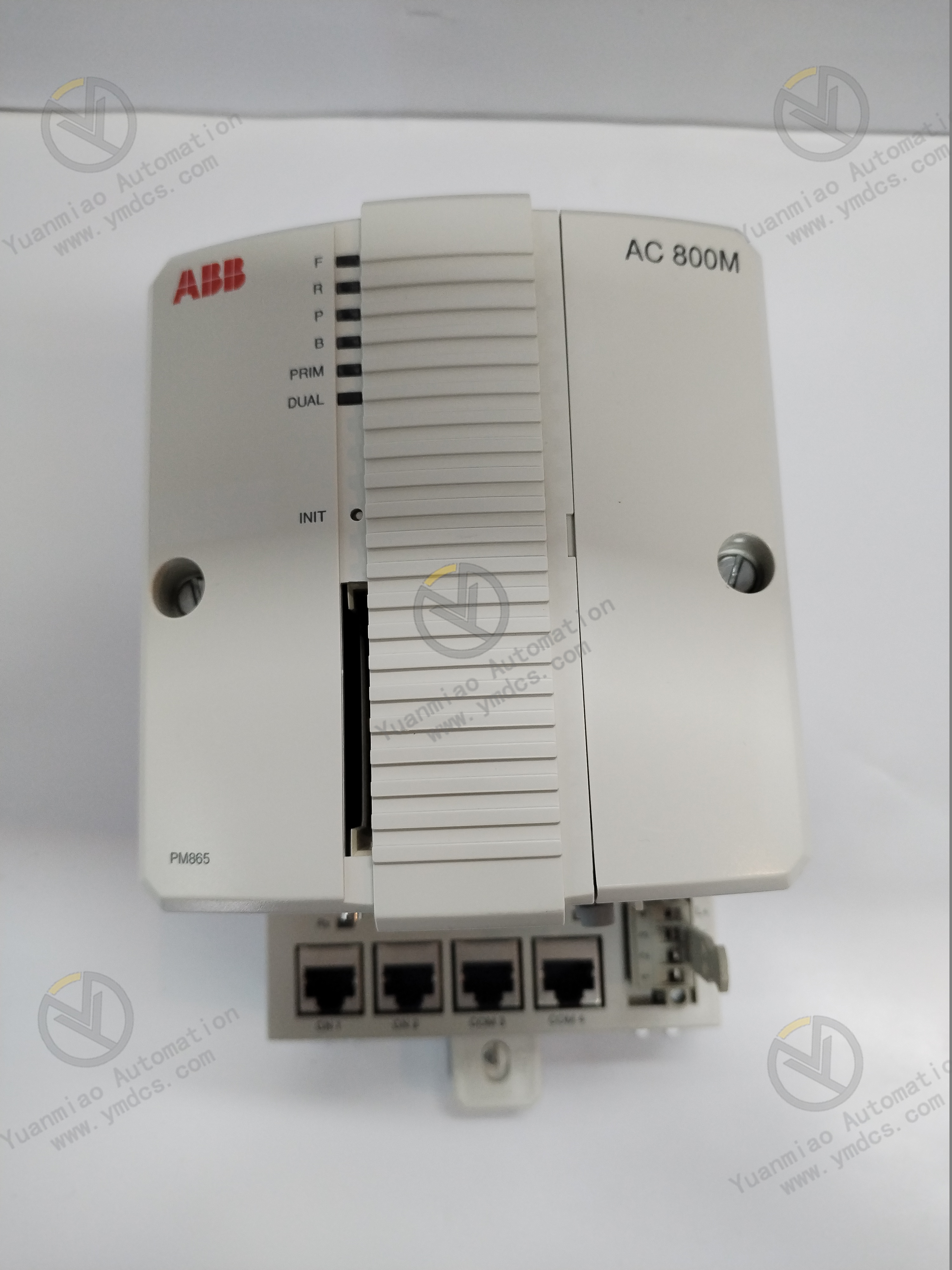
Redundancy Design
The PM865K02 supports multiple redundancy designs, including CPU redundancy, CEX-Bus redundancy, and S800 I/O redundancy. In the CPU redundancy configuration, if the primary processor fails, the backup processor can seamlessly take over tasks within a maximum of 10ms, ensuring continuous system operation. This significantly enhances system reliability and stability, making it suitable for industrial environments with high safety and reliability requirements.
Operation Guide
Hardware Installation:
- Select an installation location that meets the module’s environmental requirements and mount the module on a standard DIN rail to ensure secure fixation.
- Correctly connect power input terminals, communication cables, and bus connectors for I/O modules as per the manual, ensuring proper, tight connections without looseness or oxidation.
Software Configuration:
- Install programming software compatible with the PM865K02, such as ABB’s related engineering software.
- Establish communication with the module via the programming software by configuring network parameters to ensure the computer and module are on the same network segment.
- Create a new project in the software and configure various module parameters according to actual application needs, including communication parameters, I/O configuration, and control logic programming.
- Download the program to the module after configuration, ensuring stable power supply and unobstructed communication during the download process.
Routine Maintenance:
- Regularly check the module’s LED indicator status (e.g., power, communication, operation indicators) to monitor its working condition. Refer to the manual for fault troubleshooting in case of abnormalities.
- Clean the module’s surface periodically to prevent dust accumulation that may affect heat dissipation.
- Inspect power connections, communication cables, and I/O terminal connections for looseness and tighten them promptly if found.
- Monitor ABB’s official website for firmware update information, and perform timely upgrades to enhance performance and fix defects (backup important data before upgrading).
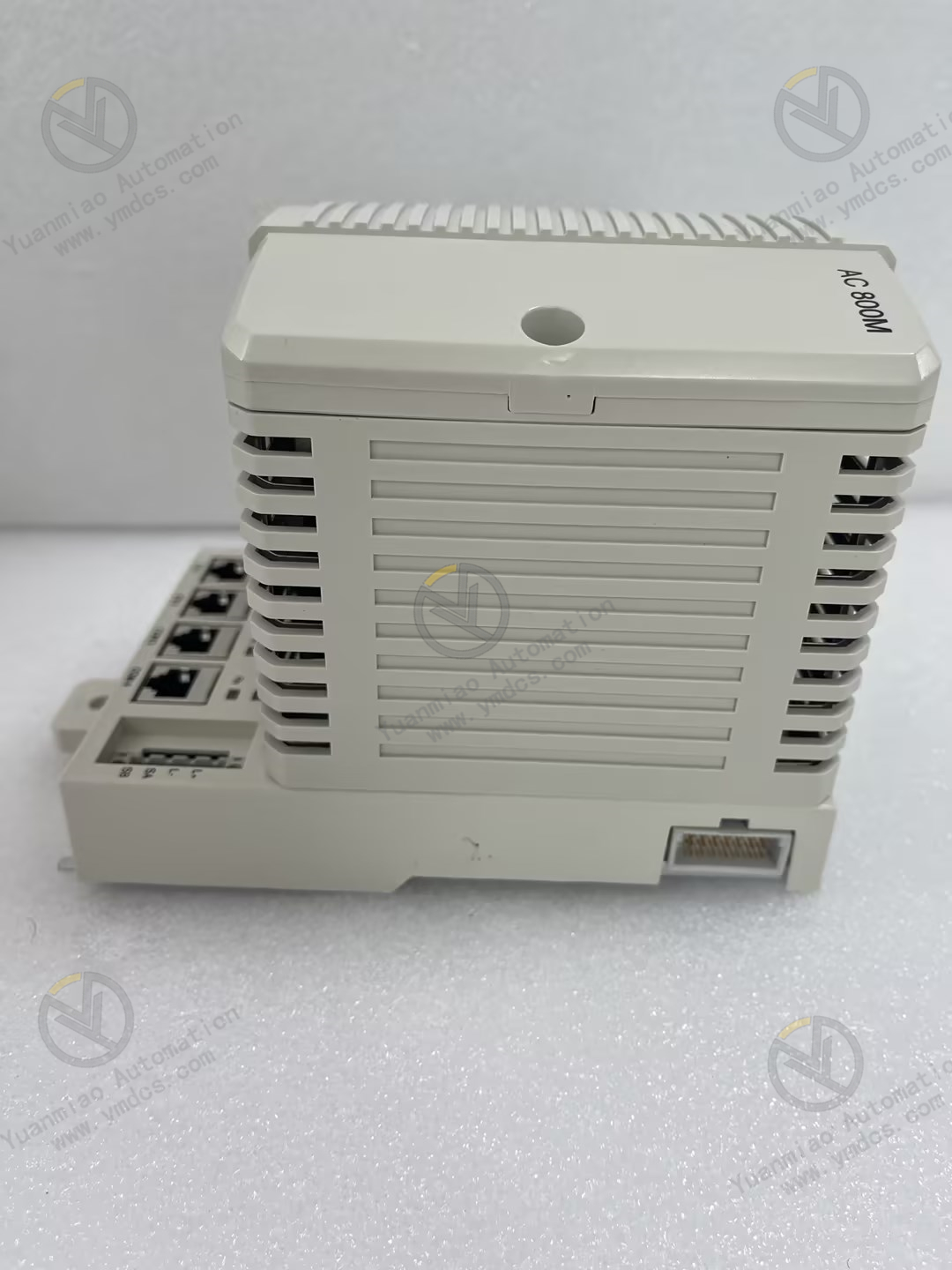
Application Areas
Process Automation: Used in production processes of chemical, petroleum, and pharmaceutical industries to precisely control and monitor process parameters such as temperature, pressure, flow, and liquid level, achieving automation and optimization of production processes.
Machine Control: Applicable to control of various industrial robots, automated production line equipment, CNC machines, etc., ensuring precise operation and coordinated work of machines to improve production efficiency and product quality.
Energy Sector:
Machine Control: Applicable to control of various industrial robots, automated production line equipment, CNC machines, etc., ensuring precise operation and coordinated work of machines to improve production efficiency and product quality.
Energy Sector:
- In power systems, used for substation automation, power grid dispatching control, and power plant process control.
- In new energy fields (e.g., solar and wind power generation systems), used to monitor and control power generation equipment, ensuring stable energy production and transmission.
Water Treatment: Suitable for automation control systems in waterworks and wastewater treatment plants to precisely control technological processes such as chemical dosing, filtration, sedimentation, and disinfection, ensuring water quality compliance.


